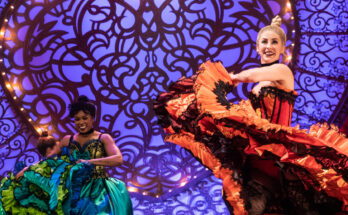For Jesse Huot, archiving the work of famed dancer/choreographer Twyla Tharp and acting as her business manager is more than just a job. It’s a family affair. The only child of Tharp and painter Robert Huot, he has been around artists and dancers his whole life.
“The first rule was, ‘Don’t step on the kid,’ because I was crawling around the dance studio,” he says. “That’s how long I go back.
“It’s exciting to be able to work together, have that [shared] purpose; it’s very fulfilling,” he continues. “Can it be challenging sometimes? Definitely. But she’s my mom, and I approach it like that, not that she’s this famous person or incredible artist. First, she’s my mom.”
But, there’s no denying Huot’s mom is a famous and incredibly prolific artist. In addition to having a distinguished dance career, Tharp has choreographed more than 130 works for ballet companies, films and Broadway; written two books with another on the way; and has received honors such as the MacArthur Foundation “genius grant.”
“I think Twyla is one of the pioneers, if not the pioneer of what’s known as ‘crossover’ dance,” Huot says. “Her piece Deuce Coupe (1973) was one of the first dances incorporating classical and modern ballet on one stage at one time.”
This month, Atlanta audiences will be the first to see Tharp’s newest work, Come Fly With Me. Set to the music of Frank Sinatra, it is “rooted in relationships,” Huot says. “In the Billy Joel show (Movin’ Out) or the Bob Dylan show (The Times They Are A-Changin’), there was a lot of political commentary. This has no political commentary. Sinatra music … [is] a vehicle that allows relationships to be explored. And the dancing is visceral.”
Creating visceral experiences is something Tharp excels at. And Huot is proud to have been able to bear witness to so many, first-hand.
“I have incredible respect for all the works,” he says. “The experience of being able to try this stuff out is amazing. To have the opportunity to create something; to develop a relationship with an audience in less than three hours; to try and communicate different ideas, feelings and emotions; and then to be sitting in the house [wondering] if people are experiencing this the way I hope [they] will. That’s pretty neat.”
However, Huot’s not only at rehearsals to observe. He also collects, archives and catalogues every element of Tharp’s work — from lighting plots, music and rehearsal notes to videotapes, photos and costumes — so that the integrity of each piece may be preserved for future generations. “There are always going to be variations when a dance is redone,” Huot says. “But we’re hoping to keep the versions as close to what Twyla wanted as possible.”
Huot is looking forward to seeing the final version of Come Fly With Me, a show that’s been three years in the making and features many dancers from the original Broadway cast of Movin’ Out.
“I’m excited to see the whole thing, feel it from beginning to end and say, ‘Wow, that was really an experience,’” he says.
An experience that, thanks to his archival work, people will be able to enjoy for many years to come.



